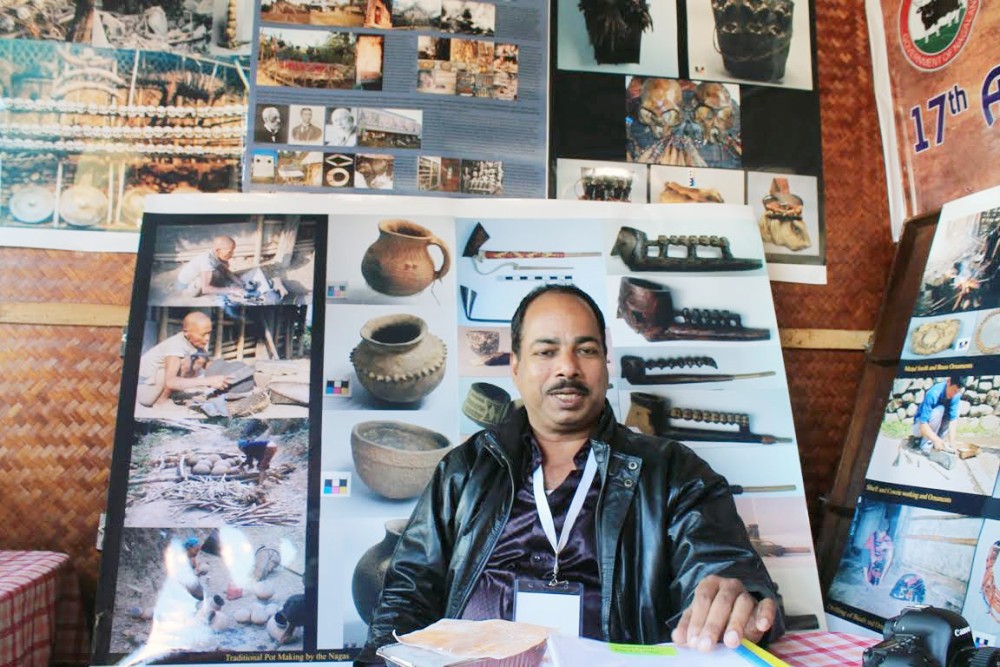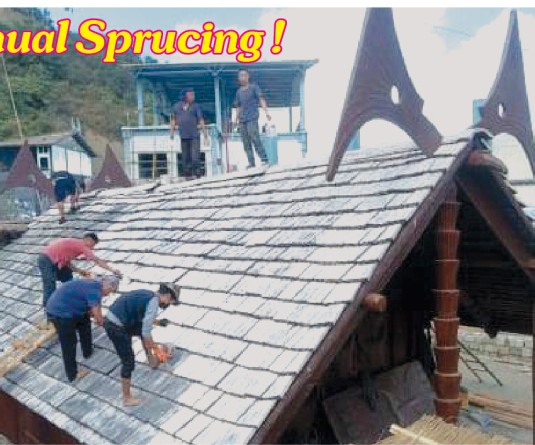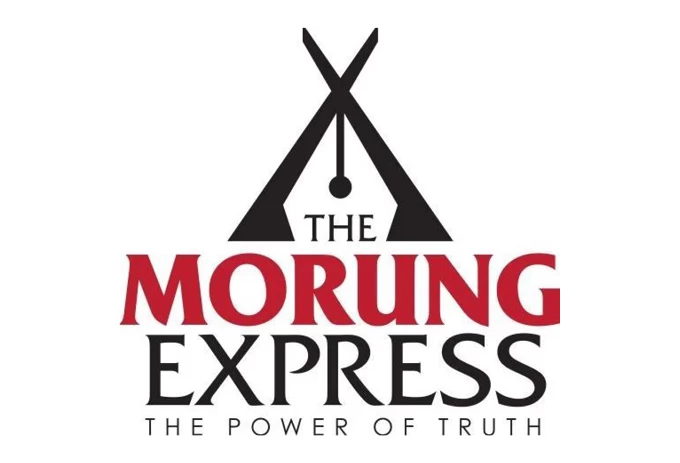Dr. Alok Kumar Kanungo speaking in Kohima on December 2.

Archaeologist Dr. Alok Kumar Kanungo discusses Naga artifacts spread across museums in various countries, and the need to reclaim the artifacts
Morung Express News
Kohima | December 2
The need of the hour is to make a unification effort, and something that will hold all Nagas together in their cultural past, said Dr. Alok Kumar Kanungo, Assistant Research Professor, Archaeology from the Indian Institute of Technology, Gandhinagar who has been researching on Naga artifacts for almost 20 years now, starting from 1996.
Stressing on the numerous Naga artifact collections spread across several museums in countries such as the UK and Germany, he pointed out the essence of reclaiming the ownership of the artifacts collected during the colonial era. Dr. Alok, who will soon be releasing his book called ‘German Anthropologists on the Naga Hills’ was present at the 17th Archival exhibition by the Department of Art and Culture at the Hornbill Festival, Kisama on December 2.
“You have a cultural, ethical right to know where your cultural material objects have been moved. It is a fundamental requirement. So it is time that Nagas need to make a big database of objects located in all over the places,” he said while pointing out how during the two world wars, the Naga artifacts were moved from places and mixed up.
There are 50,000 Naga artifacts registered in museums in UK. While the amount of artifacts are not known in other countries, Dr. Alok informed how the changing times in history also led to the loss of some Naga artifacts in the process. For example, during the Second World War when Russia took over Germany many of the Naga artifacts were taken as war booty by Russia, with no track of where the artifacts have been placed in recent times.
Stressing on the importance of horizontal development in terms of culture, Dr. Alok appealed that if so much is being spent on the display and preservation of Naga culture, then the collections and preservation of artifacts must be given priority.
Dr. Alok who has spent one and a half years in Germany to study Naga artifacts in museums in Germany, stated that Nagas have not focused on German Anthropologists who were the first anthropologists to research on Nagas. The collections of Naga artifacts in museums in Germany which were collected before the WWI are also significant because they are not mixed, according to Dr. Alok, and can be scientifically analyzed which in turn will help Nagas to know their past origins and migrations and its contact towards India or Burma.. “It will tell the origin of Nagas more than anything else. It will work like a DNA,” he claimed.
While the artifacts in German museums have been well-preserved, Dr. Alok mentioned many of the artifacts in UK have been kept haphazardly and with very less dignity. The objects tell us stories, he said, and the identity and meaning of such objects differ from community to community. Further the stories get lost in the careless collections. Here, Dr. Alok also highlighted that the intellectual property rights for such artifacts are the Nagas, therefore the curators for such artifacts should also be Nagas who understand the meaning of the objects.
He suggested the need for making a database of all Naga objects in all the countries, develop accessibility of these artifacts and make efforts to bring back the artifacts. However, Dr. Alok also stated that Nagas are not ready to bring back the artifacts due to the lack of conservation facilities.
Dr. Alok also provided photocopies of limited materials of dissertations by MA and MPhil students in the UK on Nagas, and rare letters and diaries by Anthropologists such as Jamie Sauls, Henry Balfour, Hutton and JP Mills during their stay in the Naga Hills.
The modus operandi of collections of artifacts, were done through correspondence of letters exchanged between curators and anthropologists, and collectors and administrators. The digitized copies which have been meticulously made by Dr. Alok have been handed over to the Department of Arts and Culture and will be available for study very soon.






